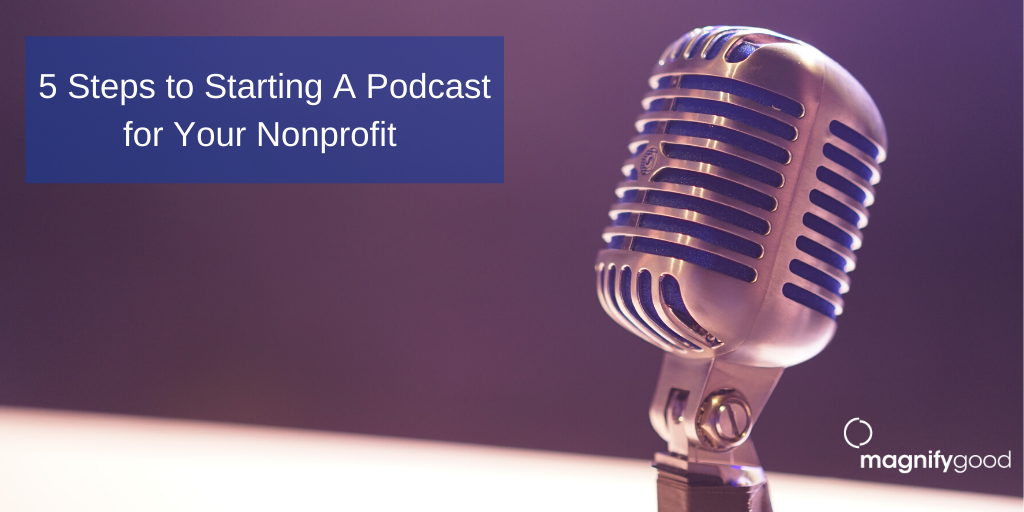Oral storytelling is a part of human history, and there is no better digital medium to tap into this innate human characteristic and desire than Podcasts. Not only is it a part of our historical fabric as individuals — podcasting as a medium is on the rise.
Anyone can have a podcast, and access to them is only growing with streaming platforms like Spotify and Apple Music. Aligned with podcasts becoming more accessible, the number of individuals in the United States who regularly listen to podcasts is also increasing. Research shows that nearly one in three people in the United States regularly listen to a podcast at least once a month.
There are numerous opportunities to make the stories you tell on your podcasts more compelling, like having a guest speaker, using relevant sound effects, and dramatized audio structure — giving your stories true staying power.
Beyond these benefits, podcasts can be adapted into various forms of media for your stories, such as blogs, social media posts, radio bits. In recent years, some storytelling podcasts have even been adapted for TV.
With such a drastic rise in popularity, as well as its various creative benefits, it only makes sense that your nonprofit considers podcasts as a platform for sharing its stories. Follow these five steps, and you’ll be well on your way to amplifying your nonprofit’s stories with a podcast.
Choose a Topic
For an organization with a solid mission, choosing a specific topic for your podcast should be fairly simple, but it requires doing a bit of research first. Instead of something broad like ‘nonprofits’ or ‘philanthropy,’ narrowing a topic down to something more specific such as ‘education’ or ‘alleviating hunger’ will boost the likelihood of your podcast being discovered. Checking streaming platforms like iTunes and Spotify prior to finalizing your topic will give you an idea of how other podcasts are covering the same subjects.
Decide a Format
When building a following, consistency is key — which means you’ll need to nail down a clear format for your show. There are many things to consider when deciding on what direction to take. Will your show have one host or two? How long will the episodes be and how often will they be published? Consider the individuals you’d like to target when contemplating the best way forward. Research shows that the average overall length of a podcast is about 45 minutes, which is likely good for multiple segments of your audience.
Invest in the Essentials
Starting a nonprofit podcast might seem like a daunting task when you start considering all of the equipment you might need, including the costs of it all. But contrary to this belief, all you really need to start a podcast are the essentials: a quality microphone and a computer. Of course there are various pieces of highly affordable equipment your organization can invest in to take its podcast to the next level. Additionally, you’ll need to research the best websites to host your podcast. There are numerous low-cost options that even include support teams to help you with any difficulties you might face.
Give it a Good Brand
Just like blogs, newsletters and social media profiles, your podcast’s brand needs to be consistent and referenced in various elements of the show. Your podcast is going to need a title and unique, branded cover artwork. You’ll want every episode to start with a short introduction that introduces the podcast and its hosts, identifies its target audience and explains why people should listen. In addition, your podcast should close with a short ‘outro’ that includes a call-to-action, such as “Listen next week.”
Get Listeners
Once your show is live, you’ll want to promote it to acquire more listeners. Using your organization’s website, email newsletter, blogs and social media profiles to promote your nonprofit’s podcast will extend its reach. Beyond simply letting your followers know that your podcast exists, you can enlist supporters, strategic partners, friends and family to help it gain more traction by sharing it as well.
Advances in technology have made our world more connected than ever before, altering the way donors come in contact with your organization and influencing new forms of giving. Leveraging digital tools like email newsletters, social media platforms, blogs and podcasts is essential to connecting with your audience in this always-on world. In addition, these tools can help your organization extend its mission and impact across the world. If you want to learn more about all of the fresh and creative ways to get your stories in front of your current and prospective donors using digital platforms, download our free guide, The Nonprofit’s Guide to Digital Storytelling.
Photo Credit: Matt Botsford via Unsplash



